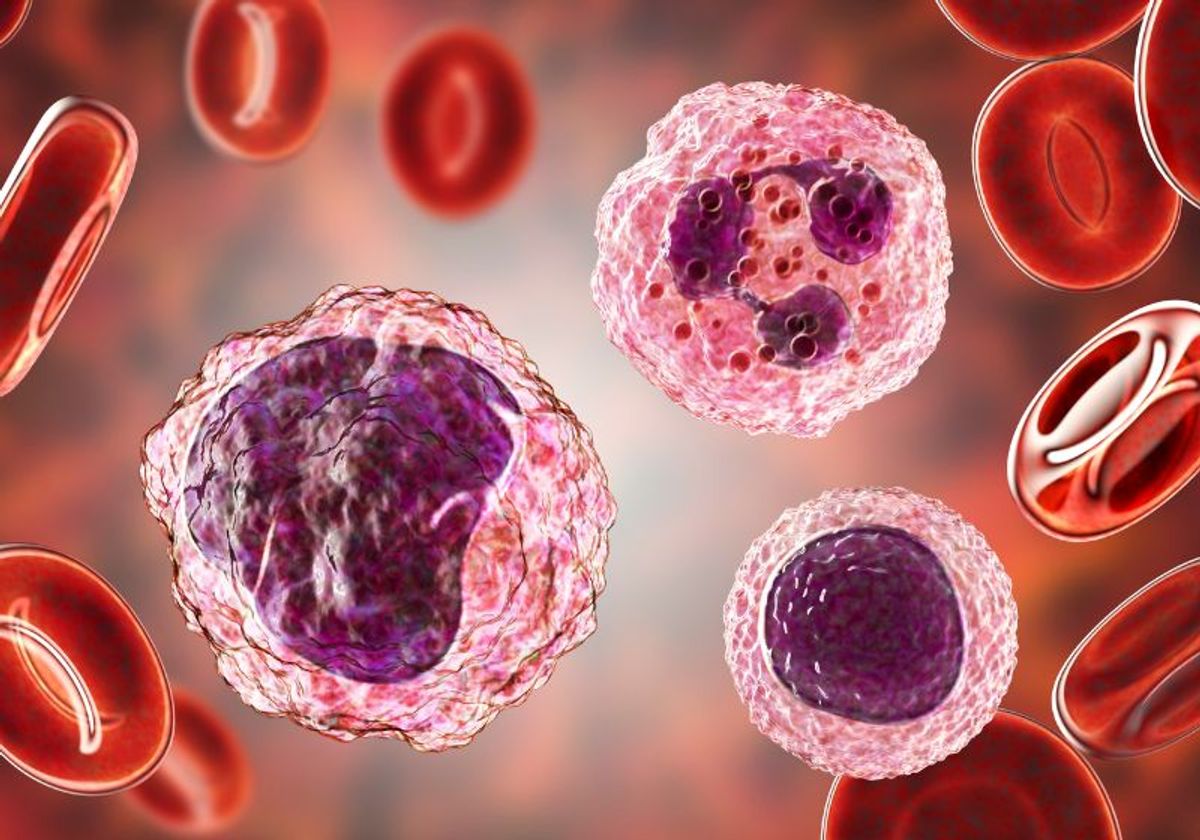Peripheral blood mononuclear cell (PBMC) is an umbrella term encompassing cells commonly found in the circulation with only one round nuclei. Many key immune cell types are PBMCs, including T cells, B cells, monocytes, dendritic cells, and natural killer (NK) cells. These cells drive the body’s responses to external pathogens, mediate immunological memory, and are heavily involved in physiological homeostasis regulatory mechanisms, such as anticancer sentinel activity and inflammation control.1
PBMCs are relatively easy to access, and they provide a more comprehensive overview of immune system status than circulating serum or plasma molecular markers.1 As such, PBMCs—their properties, behavior, and function—are a major focus of disease research. Scientists have used PBMC data to investigate immune responses in cancer, allergies, autoimmune diseases, and transplant rejection, to name a few.1 While alterations in PBMC characteristics can indicate pathogenesis, they may also be pivotal to therapeutic efforts. This means that PBMCs serve as sources of biological information and as manipulatable models for pre-clinical and translational research endeavors.
The Advantages of Cryopreservation
To carry out their immune system functions, PBMCs shift phenotypes based on environmental cues. Therefore, to work with PBMCs, researchers need to know how to process, handle, and store them in order to preserve experimental consistency and biological relevance. Freshly-extracted PBMCs are the most physiologically-relevant research model. However, they also offer very little experimental flexibility because they have short shelf lives and are available only in limited quantities. As such, the majority of PBMC research relies on frozen PBMCs, either extracted and processed for storage by the researchers themselves or acquired from commercial sources.
Commercially-available, frozen PBMCs offer a solution to the logistical burdens associated with fresh PBMCs. They are available in large quantities quickly upon request and can be further stored for extended periods of time until needed. Researchers may have concerns about cryopreservation affecting cell health or other properties; however, PBMC products are screened and evaluated for viability and physiological relevancy. Thanks to these quality checks, commercial PBMC products are consistent batch-to-batch, allowing scientists to compare data from experiments conducted by different groups or from runs that are weeks, months, or years apart.
Fully Characterized, Ready to Use, and at Your Fingertips
MilliporeSigma, in partnership with BioIVT, offers an extensive and comprehensive portfolio of ready-to-use frozen PBMCs sourced from healthy and diseased human donors. Additionally, MilliporeSigma and BioIVT also offer PBMC subsets for researchers focusing on a specific immune cell type or subtype. These range from mature CD8+ cytotoxic T cells to CD34+ hematopoietic stem cells and bone marrow mononuclear cells. These cells are sourced from clinical sites in full compliance with ethical and regulatory requirements. They also come with donor information outlining age, sex, ethnicity, medical history, disease characterization, treatments/therapies, and patient outcomes. This information is vital for letting scientists select cells that fit their research aims. Patient- and healthy donor-sourced cells are useful for researchers investigating the pathology, progression, treatment, and prevention of conditions including hepatitis, Crohn’s disease, arthritis, and diabetes.
Reference
- P. Sen et al., “Perspectives on systems modeling of human peripheral blood mononuclear cells,” Front Mol Biosci, 4:96, 2018.






